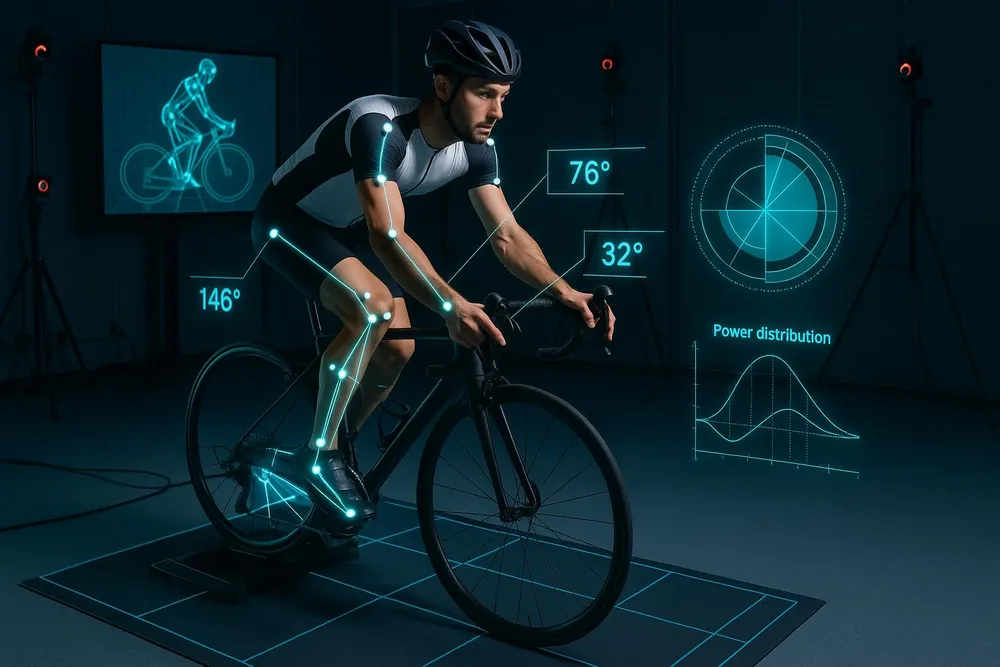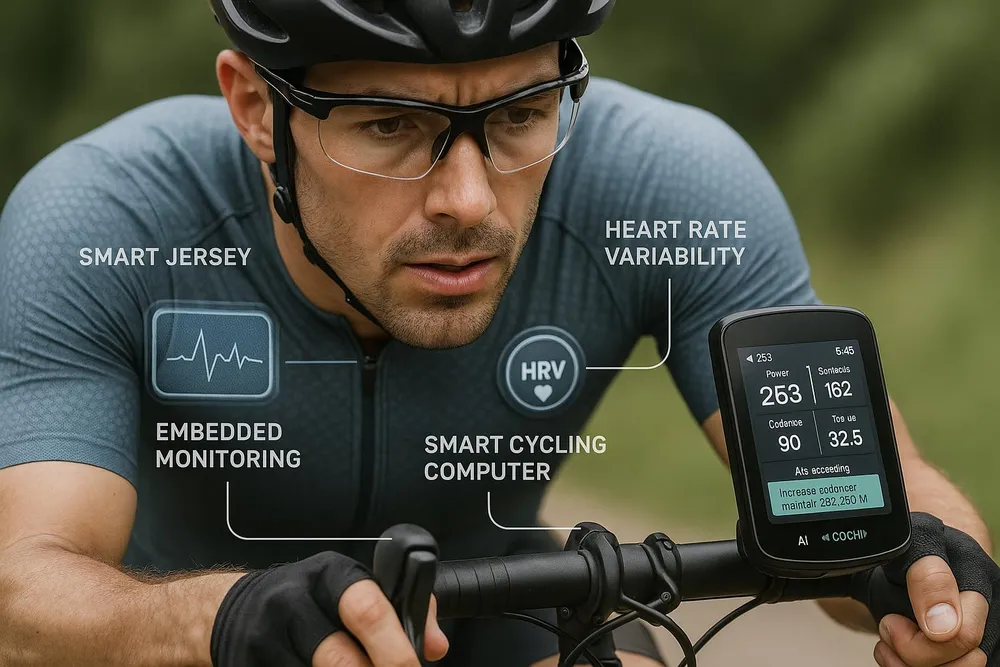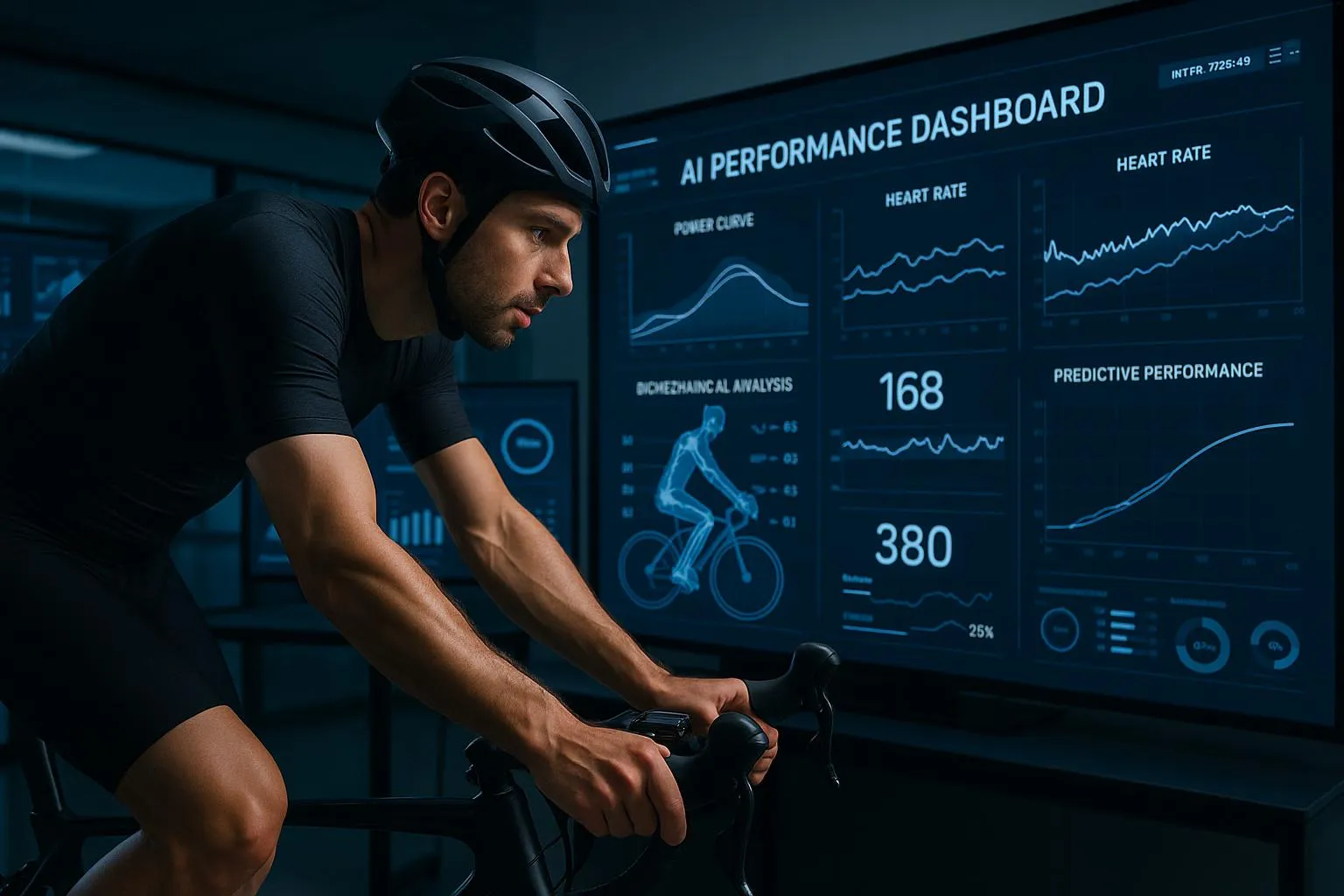The world of competitive cycling has entered an unprecedented era of data-driven performance optimization, where artificial intelligence and advanced analytics are revolutionizing how athletes train, compete, and achieve peak performance. The 2025 cycling season has witnessed the emergence of sophisticated AI systems that can analyze vast amounts of performance data in real-time, providing insights that were previously impossible to obtain even with teams of sports scientists and coaches. This technological revolution is not merely about collecting more data, but about transforming raw information into actionable intelligence that can predict performance outcomes, optimize training protocols, and identify the subtle factors that separate good cyclists from great ones.
The cycling data analytics revolution represents a fundamental shift from intuition-based training to precision-engineered performance optimization. Modern AI systems can process thousands of variables simultaneously, from traditional metrics like power output and heart rate to sophisticated biomechanical analyses, environmental factors, and even psychological indicators that influence performance. This comprehensive approach to performance analysis is enabling cyclists at all levels to unlock their potential through scientifically-backed training strategies that adapt continuously to their evolving capabilities and goals.
The Evolution of Cycling Performance Metrics
Traditional cycling performance measurement has evolved far beyond the basic metrics of speed, distance, and heart rate that defined earlier generations of cycling technology. Today’s advanced performance analytics systems incorporate hundreds of data points collected from multiple sensors, creating a comprehensive picture of athletic performance that encompasses physiological, biomechanical, and environmental factors [1]. The sophistication of modern cycling metrics allows for unprecedented precision in performance analysis and optimization.
Power meter technology has undergone revolutionary improvements, with dual-sided power meters now providing detailed analysis of left-right leg balance, pedal stroke efficiency, and torque effectiveness that can identify subtle biomechanical inefficiencies that limit performance [2]. Advanced power analysis systems can break down each pedal stroke into multiple phases, analyzing the contribution of different muscle groups and identifying optimal cadence ranges for different types of efforts. This granular level of analysis enables coaches and athletes to make precise adjustments to technique and training that can yield significant performance improvements.
Heart rate variability analysis has emerged as a critical component of modern cycling performance monitoring, providing insights into autonomic nervous system function, recovery status, and training readiness that go far beyond traditional heart rate monitoring [3]. Advanced HRV analysis systems can detect subtle changes in physiological state that indicate overtraining, illness, or optimal training readiness, allowing athletes to adjust their training intensity and volume with scientific precision. These systems integrate with sleep monitoring and stress analysis to provide a comprehensive picture of an athlete’s physiological state.
The integration of biomechanical analysis into cycling performance metrics has opened new frontiers in performance optimization. Three-dimensional motion capture systems can now be deployed in field conditions, providing real-time analysis of pedaling mechanics, body position, and aerodynamic efficiency during actual training and competition [4]. These systems can identify subtle changes in technique that occur under fatigue, different environmental conditions, or varying effort levels, enabling targeted interventions that improve both efficiency and injury prevention.
Artificial Intelligence in Training Optimization
The application of artificial intelligence to cycling training optimization represents one of the most significant advances in sports science in recent decades. Modern AI coaching systems can analyze patterns in training data that would be impossible for human coaches to detect, identifying optimal training loads, recovery periods, and adaptation strategies that are uniquely tailored to each individual athlete [5]. These systems continuously learn from training responses, competition results, and physiological adaptations, refining their recommendations to maximize performance gains while minimizing injury risk.
Machine learning algorithms have revolutionized the understanding of training periodization, moving beyond traditional linear and non-linear periodization models to create dynamic, adaptive training programs that respond to real-time feedback from the athlete’s physiological systems [6]. These AI-driven periodization systems can adjust training intensity, volume, and focus based on factors such as training response, competition schedule, environmental conditions, and even psychological state indicators derived from various data sources.
The development of predictive performance modeling has enabled coaches and athletes to forecast competition results with remarkable accuracy, allowing for strategic planning and tactical adjustments that can provide competitive advantages [7]. These models incorporate historical performance data, current fitness indicators, environmental factors, and even competitor analysis to predict optimal race strategies and identify areas where marginal gains can be achieved. Advanced models can simulate different race scenarios and recommend tactical approaches that maximize the probability of achieving specific performance goals.
Personalized training prescription has reached new levels of sophistication through AI systems that can analyze individual response patterns to different training stimuli and recommend optimal training protocols for specific adaptations [8]. These systems recognize that athletes respond differently to various training methods and can identify the most effective approaches for each individual based on their unique physiological characteristics, training history, and performance goals. The result is highly personalized training programs that maximize adaptation while minimizing wasted effort and recovery time.

Real-Time Performance Analysis and Feedback
The ability to analyze performance data in real-time during training and competition has transformed how cyclists approach their sport, providing immediate feedback that enables instant adjustments to technique, pacing, and tactical decisions. Modern real-time analysis systems can process complex data streams from multiple sensors simultaneously, delivering actionable insights through intuitive interfaces that don’t distract from the primary focus of riding [9].
Advanced cycling computers now incorporate AI-powered analysis engines that can provide real-time coaching feedback based on current performance relative to training goals, historical data, and optimal performance models [10]. These systems can detect when a rider is deviating from optimal pacing strategies, experiencing unusual fatigue patterns, or demonstrating biomechanical inefficiencies that could be corrected immediately. The feedback is delivered through visual, auditory, or haptic interfaces that integrate seamlessly with the riding experience.
The integration of environmental data with performance analysis has enabled the development of adaptive pacing strategies that account for changing conditions such as wind, temperature, altitude, and terrain [11]. AI systems can analyze how these environmental factors affect individual performance and recommend real-time adjustments to effort distribution, hydration strategies, and tactical positioning that optimize performance for the specific conditions encountered during each ride or race.
Competitive analysis capabilities have evolved to provide real-time insights into competitor performance and tactical positioning during races, enabling strategic decisions that can influence race outcomes [12]. Advanced systems can analyze power output patterns, positioning data, and historical performance information to predict competitor moves and recommend tactical responses. This level of analysis was previously available only to professional teams with dedicated support staff, but is now becoming accessible to amateur competitors through consumer-grade technology.
Predictive Performance Modeling
The development of sophisticated predictive performance models represents one of the most exciting frontiers in cycling data analytics, offering the ability to forecast performance outcomes with unprecedented accuracy and identify the factors that will most significantly impact future results [13]. These models incorporate machine learning algorithms that can analyze complex relationships between training inputs, physiological adaptations, and performance outcomes to create highly accurate predictions of future capabilities.
Long-term performance forecasting has evolved to provide insights into how different training approaches will affect performance over months and years, enabling strategic planning that optimizes career development and peak performance timing [14]. These models can simulate the effects of different training philosophies, competition schedules, and lifestyle factors on long-term performance development, helping athletes and coaches make informed decisions about training priorities and career planning.
Injury risk prediction has become increasingly sophisticated, with AI systems that can identify subtle patterns in training data, biomechanical analysis, and physiological markers that indicate elevated injury risk before symptoms become apparent [15]. These predictive models enable proactive interventions that can prevent injuries through targeted strength training, technique modifications, or training load adjustments. The ability to predict and prevent injuries represents a significant advancement in athlete health and career longevity.
Performance plateau identification and breakthrough strategies have been revolutionized by AI systems that can detect when athletes are approaching performance plateaus and recommend specific interventions to stimulate continued adaptation [16]. These systems analyze training response patterns, physiological adaptations, and performance trends to identify when current training approaches are becoming less effective and suggest alternative strategies that can reignite performance improvements.
Integration with Wearable Technology
The seamless integration of cycling data analytics with advanced wearable technology has created a comprehensive monitoring ecosystem that provides continuous insights into athletic performance and physiological state [17]. Modern wearable devices can collect data on sleep quality, stress levels, nutrition, hydration, and recovery status, providing a holistic view of the factors that influence cycling performance beyond just the time spent on the bike.
Continuous physiological monitoring through advanced wearables enables the detection of subtle changes in health and fitness status that can significantly impact training effectiveness and performance outcomes [18]. These systems can identify early signs of illness, overtraining, or suboptimal recovery that might not be apparent through traditional monitoring methods. The continuous nature of this monitoring provides a much more complete picture of an athlete’s physiological state than periodic testing alone.
The development of smart clothing and embedded sensors has expanded the possibilities for unobtrusive performance monitoring that doesn’t interfere with the natural cycling experience [19]. Smart jerseys can monitor respiratory patterns, core temperature, and muscle activation levels, while smart shorts can analyze pedaling biomechanics and power distribution. This integration of monitoring technology into cycling clothing represents the future of performance analysis, where comprehensive data collection occurs seamlessly during normal training and competition.
Multi-device data fusion has become increasingly sophisticated, with AI systems that can combine data from multiple wearable devices, bike-mounted sensors, and environmental monitors to create comprehensive performance profiles that account for all relevant factors affecting cycling performance [20]. These integrated systems provide insights that would be impossible to obtain from any single data source, enabling more accurate performance analysis and more effective training optimization.

The Future of Cycling Data Analytics
The future of cycling data analytics promises even more sophisticated applications of artificial intelligence and machine learning to performance optimization, with emerging technologies that will further revolutionize how cyclists train and compete [21]. Quantum computing applications in sports analytics could enable the analysis of exponentially more complex data relationships, potentially uncovering performance optimization strategies that are currently beyond our computational capabilities.
Brain-computer interface technology is beginning to show promise in cycling applications, with early research suggesting that direct neural feedback could provide insights into cognitive load, attention, and decision-making processes that affect cycling performance [22]. These technologies could eventually enable training protocols that optimize not just physical performance but also the mental aspects of cycling that are crucial for competitive success.
The integration of genetic analysis with performance data analytics represents another frontier that could personalize training recommendations based on individual genetic predispositions for different types of adaptations [23]. While still in early stages, this approach could eventually enable training programs that are optimized not just for current performance characteristics but also for genetic potential and optimal adaptation pathways.
Virtual and augmented reality integration with cycling data analytics could create immersive training environments that combine real-world data with simulated scenarios, enabling athletes to practice race tactics and experience different competitive situations in controlled environments [24]. These technologies could revolutionize how cyclists prepare for specific events and develop tactical skills.
Conclusion
The cycling data analytics and performance AI revolution of 2025 represents a fundamental transformation in how athletes approach training, competition, and performance optimization. The integration of artificial intelligence with comprehensive data collection and analysis has created unprecedented opportunities for cyclists to understand and optimize their performance through scientifically-backed, personalized approaches that were unimaginable just a few years ago.
The democratization of advanced analytics technology means that insights previously available only to elite professional athletes are now accessible to cyclists at all levels, enabling everyone to benefit from data-driven training optimization and performance analysis. This technological revolution is not just changing how cyclists train, but also expanding our understanding of human athletic potential and the factors that contribute to peak performance.
As these technologies continue to evolve and become more sophisticated, the boundaries of cycling performance will continue to be pushed further, with AI-powered systems enabling athletes to achieve levels of optimization and efficiency that maximize their individual potential. The future of cycling lies in the intelligent application of data analytics and artificial intelligence to create personalized, adaptive, and highly effective approaches to training and performance that honor both the science and art of cycling excellence.
For more insights on cycling and technology, explore our comprehensive guides on Smart Cycling Technology Revolution, Cycling Recovery Technology Revolution, Advanced Cycling Technology, and Cycling Performance and Health Optimization.




